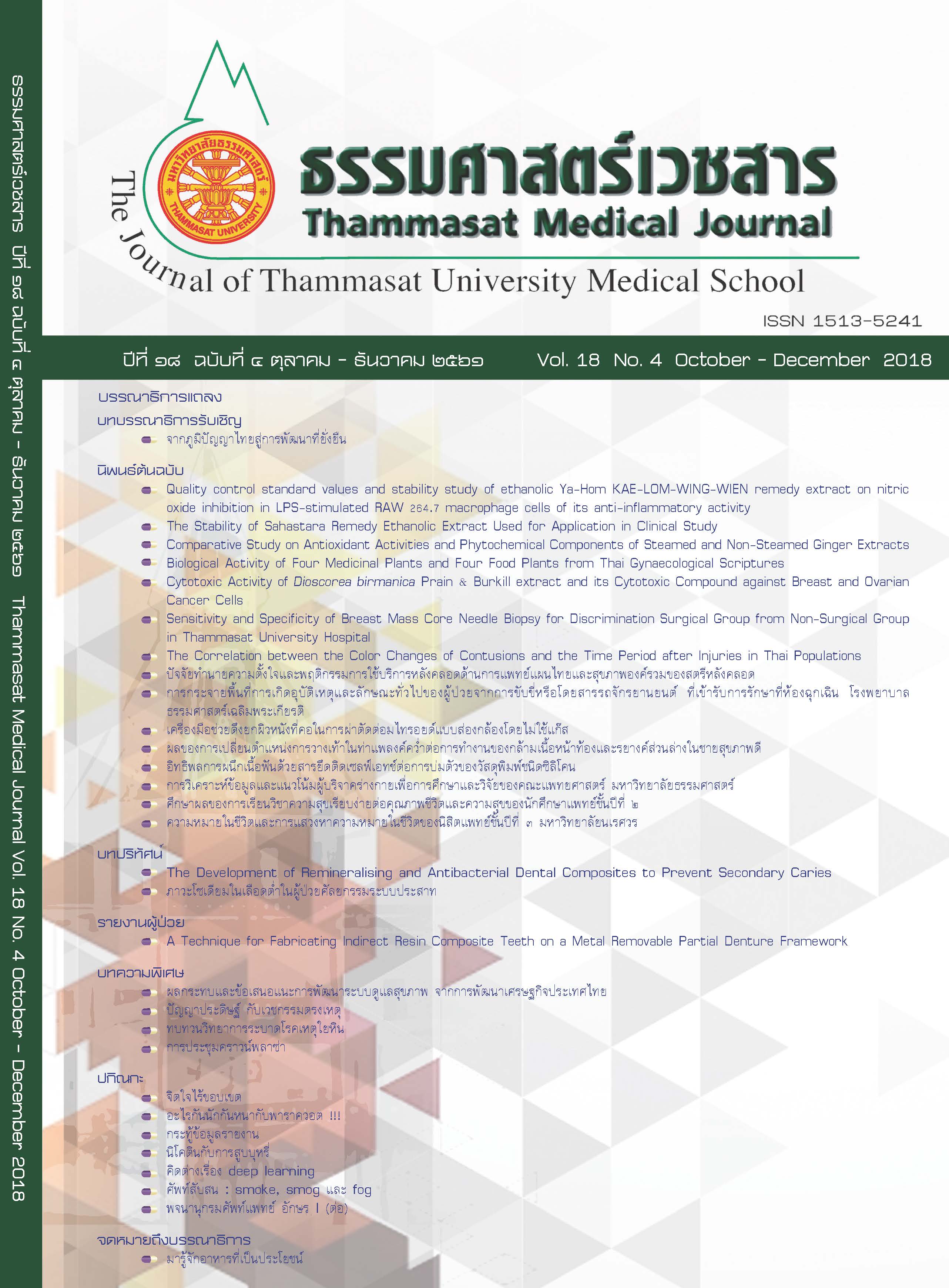Biological Activity of Four Medicinal Plants and Four Food Plants from Thai Gynaecological Scriptures
Keywords:
Medicinal and food plants, Toxicity, Anti-oxidation, AnticancerAbstract
Introduction: Medicinal plants found in Thai gynaecological scriptures are still used in the treatment of ovarian and breast cancer and some medicinal plants are daily used in Thai food. They are Boesenbergia rotunda (L.)Mansf., Piper nigrum Linn., Zingiber officinale Roscoe., Piper sarmentosum Roxb., Zingiber cassumunar Roxb., Zingiber zerumbet (L.) Smith., Oroxylum indicum (L.) Kurz.and Myristica fragrans Houtt. The objective was to investigate cytotoxicity, anti-oxidation and quality control of these plants.
Method: Sample plants were extracted similarly to that practiced by Thai traditional practitioners (ethanol extraction). All extracts were tested for their cytotoxic activity against ovarian (SKOV-3) and breast (MCF-7) cancer cells and keratinocyte cells (HaCat) by Sulforhodamine B assay, and DPPH radical scavenging assay was used to evaluate antioxidant activity. Loss on drying, Total ash and Acid insoluble ash were determined of quality control.
Results: The yield of ethanolic extracts ranged from 2.70% to 12.16%. Quality control of eight samples were according to standard guidelines. Z.zerumbet had the highest cytotoxicity against both breast and ovarian cancer cells with IC50 values of 0.25 ± 0.32 and 5.57 ± 0.47 µg/ml, respectively, and was also the highest toxic to keratinocyte cells with IC50 value of 1.86 ± 0.23 µg/ml Z.cassumunar, P.nigrum, B.rotunda, O.indicum, Z.officinale and P.sarmentosum showed toxicity against only breast cancer cells with IC50 values of 11.14 ± 1.48, 18.24 ± 2.77, 19.20 ± 0.32, 23.22 ± 1.97, 24.19 ± 1.34 and 24.84 ± 2.03µg/ml, respectively. They were not toxic to keratinocyte cells with IC50 values of 48.53 ± 4.35, 36.13 ± 1.41, 34.25 ± 0.62, > 100, 35.63 ± 0.12 and 40.39 ± 0.98 µg/ml, respectively. Only O. indicum from eight samples showed higher antioxidant activity than BHT,a positive control, with EC50 of 10.63 ± 0.11 and 12.34 ± 0.03 µg/ml, respectively.
Discussion and Conclusion: Medicinal and food plants showed high toxicity against breast cancer cells, while not damaging normal cells. In particular, Z.cassumunar, P.nigrum and B.rotunda were highly toxic against breast cancer cells without keratinocyte toxicity. The local wisdom of Z. zerumbet drug preparation, which is that it cannot be used on its own possibly because of keratinocyte celltoxicity but should be used as a part of remedy. Thus, it should be further studied to find and isolate cytotoxic compounds to be markers in development of products for cancer treatment, and on-going safety testing on normal cell lines.



